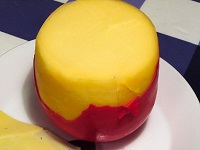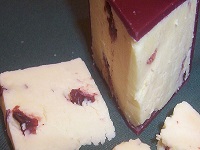Bobal (Spain)
Bobal is Spain's third most planted grape variety behind Tempranillo and Airén.
Bobal Flavors
Young Bobal wines often burst with fresh fruit flavors like dark cherry, raspberry, and blackberry. In mature wines, the fruit flavors are more concentrated and jammy, with plum and blackcurrant notes. A distinct licorice or anise flavor can sometimes be detected.
Black Cherry |
Raspberry |
Blackberry |
Pomegranate |
Blueberry |
Black Currant |
Plum |
Licorice |
A subtle floral note (violet) often adds an aromatic complexity to the wine. Notes of thyme, rosemary, or lavender can reflect the local terroir. Spicy pepper hints often add complexity in the most robust wines.
Violet |
Herbs |
Pepper |
Flavors from Maturation and Aging
In wines that undergo oak aging, cinnamon and clove notes can emerge, and you will find secondary flavors of chocolate, mocha, and coffee.
Barrel |
Vanilla |
Dried Fruit |
Leather |
Cinnamon |
Cloves |
Chocolate |
Cocoa |
Bobal Profile
Bobal is naturally fruity and high in acidity:
| SUGAR: | Dry (3 g/l) |
| BODY: | Medium - Plus |
| TANNINS: | Medium - Plus |
| FRUIT: | Medium |
| ACIDITY: | Medium - High |
| ALCOHOL: | 12 - 13% ABV |
|
Sugar: 3 g/l Serving temperature: 15-16°C (59-61°F) | |
Bobal Food Pairing
Bobal is a food friendly wine.
Salami |
Ham |
Chicken |
Turkey |
Pork |
Lamb |
Veal |
Beef |
Excellent Pairings
Smoked Meat.
BBQ. Chicken. Turkey.
Spicy Meatballs.
Moroccan Lamb Tagine.
Rabbit. Pork. Lamb. Veal.
Chargrilled. Roasted. Beef.
Cheeses
Medium Cheeses.
Manchego. Aged Gouda. Parmesan.
Spanish Specialities
Valencian Paella (Authentic paella with Rabbit, Sausages, Chicken, and Garlic.
The Ideal Glass for Bobal
The Bordeaux Glass was designed for enjoying fuller-bodied, tannic red wines.

|
They are taller than other red wine glasses, and has a slimmer bowl.
The slimmer bowl directs the wine to the back of your mouth for a maximum taste. The size also allows the bouquet of the wine to develop, smooth out rough edges, play down tannins, and allow the wine to achieve balance. |
If You Like Bobal
You Might Also Like:
Alcohol can be addictive. Always drink in moderation.
© Copyright 2015-2025 W3 Wine School. All Rights Reserved.











